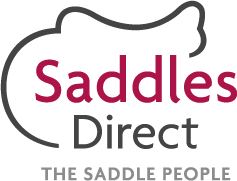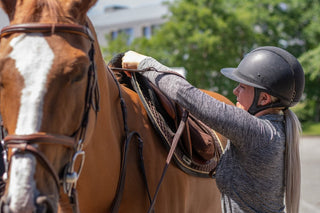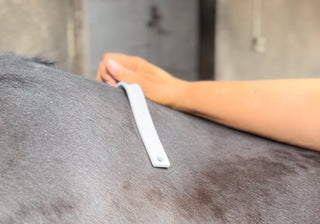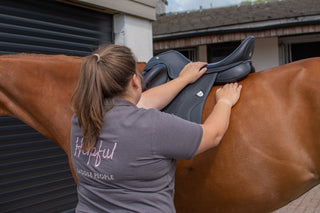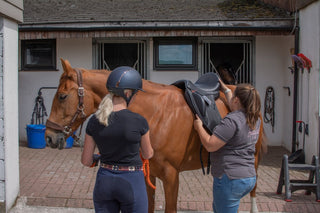Welcome to our comprehensive guide on choosing the best saddle pad for your equine partner. With so many choices and new technology on the market, we understand that navigating the bewildering array of choices can leave you feeling confused and overwhelmed. But fear not! We are here to give you the knowledge to make an informed decision.
Whether you're a seasoned equestrian looking to treat yourself or a new horse owner trying to get to grips with everything, we've got you covered. Together, let's explore the different types of saddle pads and help you find the right one for horse's unique needs. So let’s kick-on!
What is a saddle pad?
A saddle pad (also known as a saddle cloth, or numnah) is an important piece of equestrian equipment which sits between a horse's back and the saddle. But why do you need one? A saddle pad does a few key things:
-
Cushioning and Protection: It provides an additional layer of cushioning, reduces friction and prevents any rubs or chafes to your horse's skin. Some pads promote temperature regulation, by offering air flow through the pad to the horse's back
-
Pressure Distribution: Some saddle pads have technology to help evenly distribute the rider's weight over the horse's back, preventing pressure points and reducing the risk of soreness and muscle fatigue.
-
Saddle Fit Adjustment: Some pads with inserts or shims allow for minor adjustments to saddle fit, improving balance and alignment in certain cases. These are not typically recommended for traditional flocked panels, and more used with foam panels.
It's important to understand that saddle pads cannot fix a poorly fitting saddle or address underlying issues, but they can complement proper saddle fit and contribute to a more comfortable and enjoyable riding experience for both horse and rider.
Understanding Different Types of Saddle Pads
The typical composition of a saddle pad includes layers of felt, foam, gel or other synthetic fabric with a tough outer cover of cotton, polyester or sheepskin. There are different shapes and materials, but we’ll explore those later.
Here are the different types of saddle cloths with their technology and what they are best for:
- Basic Saddle Pad - A traditional saddle pad made of cotton or fleece, providing a basic layer of cushioning and sweat absorption. Ideal for everyday riding and low-impact activities.
- Gel Pad - Featuring a layer of gel material, gel saddle pads offer shock absorption and pressure distribution. They are beneficial for horses with back sensitivity or riders seeking extra cushioning.
- Memory Foam Pad - Memory foam saddle pads conform to the shape of the horse's back, providing superior cushioning and pressure relief. They distribute weight evenly and are suitable for horses with specific pressure point concerns.
- Correction/Half Pad - Correction pads allow for inserts or shims to adjust the saddle fit. They can be used with foam panel saddles to achieve a better saddle fit. It is essential that the use and type of a half pad, to be used beneath a well-fitted saddle, is discussed with a qualified saddle fitter, as unnecessary use may cause pressure points.
- Therapeutic Pad - Designed to address specific issues such as sore muscles or back problems, therapeutic saddle pads often incorporate features like magnets, ceramic fibres, or special padding to promote comfort and enhanced performance.
How to choose the right saddle pad?
Saddle Pad Materials
-
Sheepskin and Fleece
Saddlecloths with a soft, furry underside are highly popular. Traditional wool is more cushioning than synthetic fleece and also more effective at reducing friction, but usually genuine sheepskin is more expensive and requires more careful maintenance.
A synthetic fleece option can in some cases be more durable, as sheepskin material can become matted and compacted and the content of equine sweat can cause damage to the sheepskin over time.
-
Closed Cell Foam & Open Cell Foam
Commonly found in the memory foam saddle pads; Open and Closed Cell Foam is a newer technology in saddle pads and consists of molded foam wrapped in a nylon cover.
The foam allows excellent distribution of weight and provides very good shock distribution. The foam often molds to the back of the horse for better contact. The mesh material that the foam inserts are wrapped in also provides an air flow, which helps to cool the horse but the material is typically not especially absorbent or able to wick away moisture.
Closed cell foam is slightly denser than open cell foam which allows it to keep its shape better but it is the less breathable of the two options.
-
Gel
Gel saddle pads will disburse any impact and then regain its original shape. Gel is often used within the layers of a pad itself or a gel-only pad can be used alongside a regular saddle cloth. Gel pads can have a dual purpose being both anti-slip and shock absorbing but can often be expensive.
Shape of the Saddle Pad
- Contour or High Wither
Contour saddle pads are made for horses with prominent spinal processes or withers. The front part of the contour will relieve pressure whilst helping to keep the pad in place during ridden work. - Straight
Straight saddle pads are especially good for horses with a flat back, and normal, round or mutton/flat withers.
- Close Contact
Some of these saddle pads are also cut out or are thinner in the area where the rider’s legs are. These pads allow a close contact between the rider’s legs and the horse. A particular benefit for performance horses, as they allow the horse to feel the rider’s leg pressure and position. There’s no point in having a close contact saddle, and then putting a thick saddle pad between the saddle and the horse.
Remember… good saddles distribute pressure evenly across the horse’s back, and good saddle pads can help but no saddle or pad can correct the basic problem of pressure applied where it shouldn’t be.
The number one area which must be force free is the spine and there should be no pressure whatsoever in the sensitive wither zone, not even from a saddle pad.
At Saddles Direct, we are here to offer free advice and guidance, ensuring that you find the right saddle for you and your horse. Our friendly and helpful team are just a phone call or email away, ready to assist you in any way we can.
If you’ve not had your saddle checked in the last 6-months or are uncertain about the saddle fit, don't hesitate to book a saddle fitting with an independent saddle fitter or one of our expert SD fitters. So, reach out or leave a message on our live chat and let us help you towards finding the perfect fit for you and your horse.
